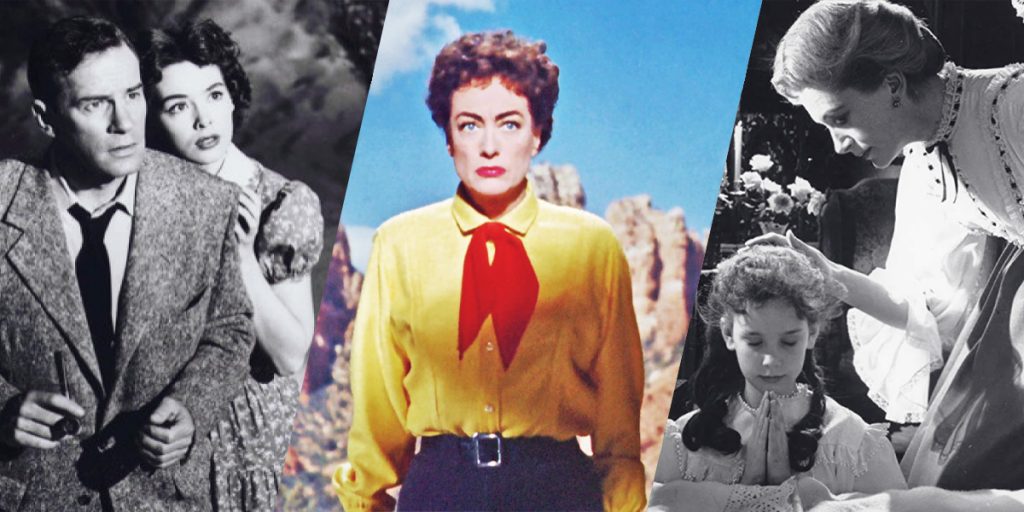While genre films have flourished in the past decade, the golden age of Hollywood produced its fair share of underseen classic genre films outside the standard drama and comedy.
With the rise in popularity of franchises such as JRR Tolkien’s Middle Earth and the Marvel Cinematic Universe, film genres that were once considered outside the mainstream have enjoyed both critical and commercial success. Today it is no longer uncool to have the backstories of each of the Guardians of the Galaxy memorized to be an expert on Jedi Lore. With this renewed popularity in genre films, it seems only fitting to examine the origins that lead to such modern classic genre films such as Hell or High Water, The Lighthouse, and The Thing. Below are 6 underseen classic genre films that deserve to be seen as landmarks in both the history of their genres and the history of film as a whole.
JOHNNY GUITAR
GENRE: WESTERN
Director: Nicholas Ray
Year: 1954

Nicholas Ray directed 25 films over 30 years and dabbled in every genre from film noir (They Live by Night) to coming-of-age (Rebel Without a Cause) and social issue dramas (Bigger Than Life), but his second venture into the Western genre is both his best film and his most valuable contribution to cinema. Following Joan Crawford as she struggles to protect both her Saloon and ex-lover from an angry mob, Johnny Guitar took the plot and character elements vital to the western genre and turned them upside down for a wholly new experience that hasn’t been replicated since.
By writing both a woman protagonist and antagonist (Mercedes McCambridge), Ray and screenwriter Phillip Yordan interrogated the popular ideas of masculinity and leadership that had pervaded the western films of John Wayne and John Ford by giving the two female leads the character traits traditionally possessed by men. What results is a film that lends itself to multiple interpretations including a parable of the red scare, a critical examination of gender roles, or a tale of queer desire. While not initially popular upon its release, Johnny Guitar has rightfully earned its place alongside other classic genre films such as The Searchers and True Grit, whose influence can still be felt today.
KISS ME DEADLY
GENRE: FILM NOIR
Director: Robert Aldrich
Year: 1955
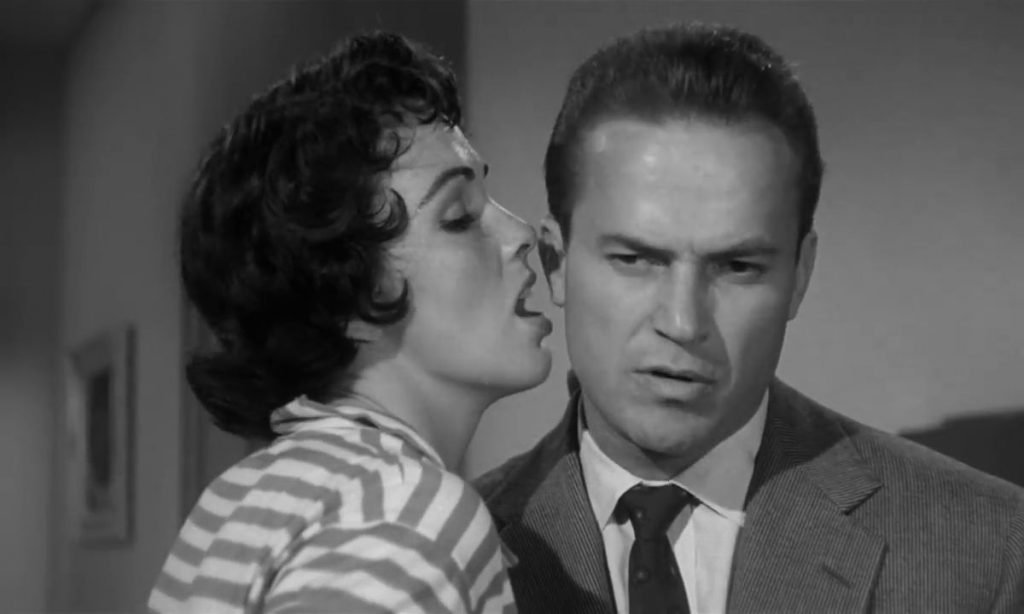
The definition of film noir as a genre is almost as difficult to understand as the films that fall under its very wide umbrella. With debate raging on what constitutes both noir style and substance, few films can unquestionably be defined as film noir. While other classic genre films, such as Touch of Evil and The Third Man, ranked among the best films of all time, other brilliant films worthy of recognition have fallen into relative obscurity. Chief among them is Robert Aldrich’s classic Kiss Me Deadly, a grim and violent crime story that is notable both for its onscreen and implied depictions of violence as well as its exploration of Cold War anxiety that still resonates 65 years later.
Based on the pulp novel by Mickey Spillane, Kiss Me Deadly follows private detective Mike Hammer who picks up a woman on the side of the road one night and is subsequently kidnapped and tortured by unknown assailants in search of a “great whatsit” that may or may not be a hydrogen bomb. Using a variety of noir tropes such as a winding and often convoluted mystery, incompetent police officers, and a mysterious McGuffin, Kiss Me Deadly is dated in some aspects (most notably the treatment of its women characters) but is still a fascinating time capsule of the 1950s, whose influence can be seen most obviously in A24’s Under the Silver Lake.
SEVEN BRIDES FOR SEVEN BROTHERS
GENRE: MUSICAL
Director: Stanley Donen
Year: 1954
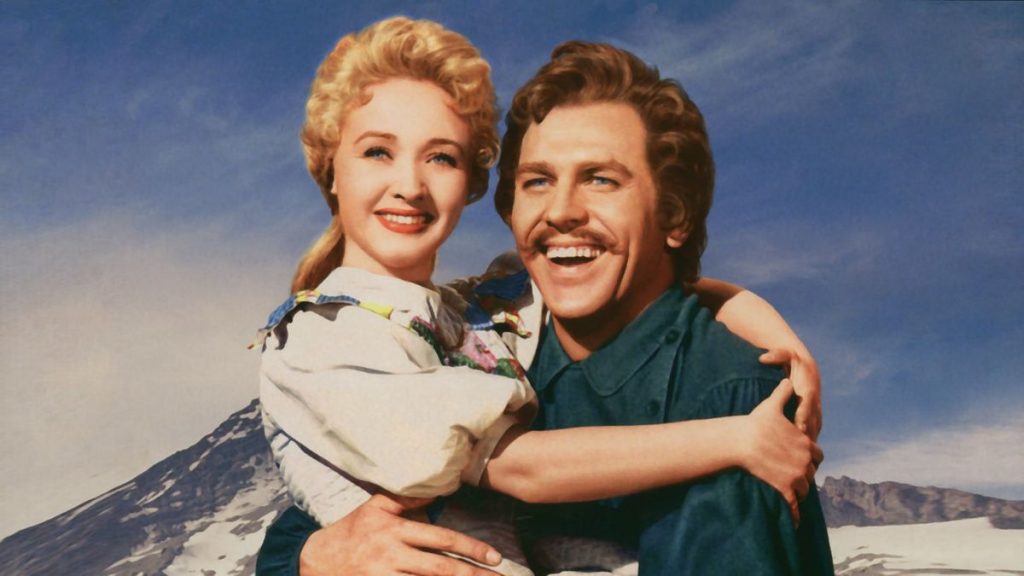
The history of the musical genre is as old as the history of sound film itself, with the first sound feature, The Jazz Singer, closely modeled around its musical numbers. Since then, the popularity of musicals has risen and fallen over time, with periods such as the 1980s having a small musical output, while the early 2000s saw the genre make a comeback in a huge way. The 1950s specifically saw an increase in movie musicals produced by MGM that were either based on or would spawn a Broadway production, including Annie Get Your Gun, Gentlemen Prefer Blondes, and Guys and Dolls. But it’s Stanley Donen’s Seven Brides for Seven Brothers that best encapsulates the musical style that became so popular in that decade. Based on a short story by Stephen Vincent Benét, the film chronicles the Pontipee brothers and their attempts to find wives in frontier Oregon, to mixed results. Playing with ideas of courtship, masculinity, and traditional ideas of family, Seven Brides for Seven Brothers may not wow like other classic genre films, but Donen’s energetic direction and an exceptional ensemble cast place it as an unsung classic of musical cinema.
THE ADVENTURES OF ROBIN HOOD
GENRE: ACTION/ADVENTURE
Director: Michael Curtiz
Year: 1938
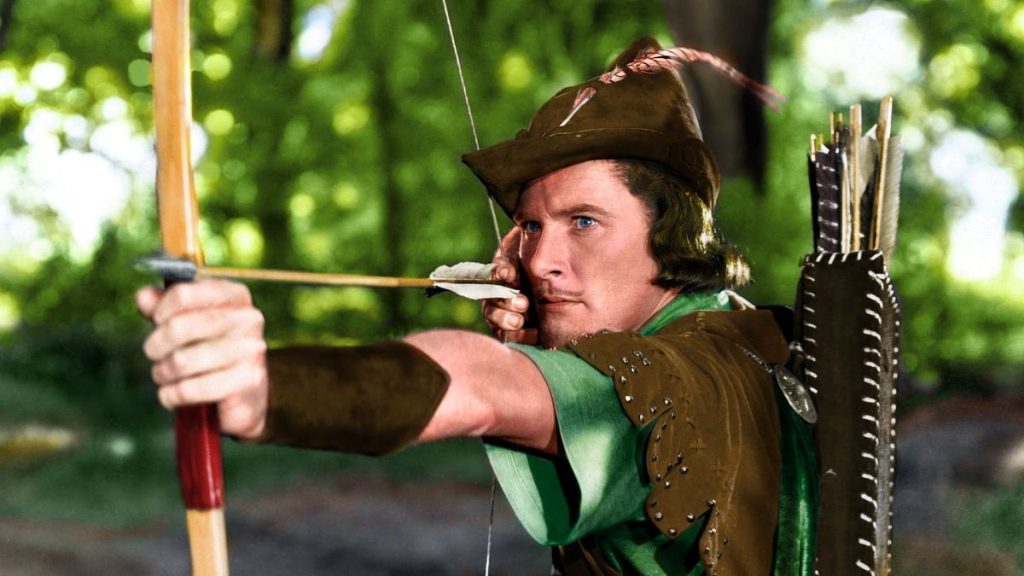
Since its initial publication in 1883, Howard Pyle’s timeless stories of the thief who robs from the rich and steals from the poor has been adapted to the screen over 50 times to varying degrees of success. While the 1973 Disney version may be the most popular, it is Michael Curtiz’s 1938 production that best captures the essence of the source material and has aged the best as a result. Curtiz, who directed over 100 films in his career including classics such as Casablanca and Mildred Pierce, proved his versatility once again with a graceful transition from both black & white and silent film with a movie that serves as one of the best uses of technicolor from the period as well as boasting sound design that feels effortless even by today’s standards. With regard to the actual story, the cast, headlined by Errol Flynn, Olivia de Havilland, and Claude Rains perfectly embodies the Prince of Loxley, Maid Mariam, and Prince John with an infectious energy that few films have possessed before or since. It’s widely accessible for all ages and deservingly holds the title as one of the first and finest classic genre films.
IT CAME FROM OUTER SPACE
GENRE: SCIENCE-FICTION
Director: Jack Arnold
Year: 1953
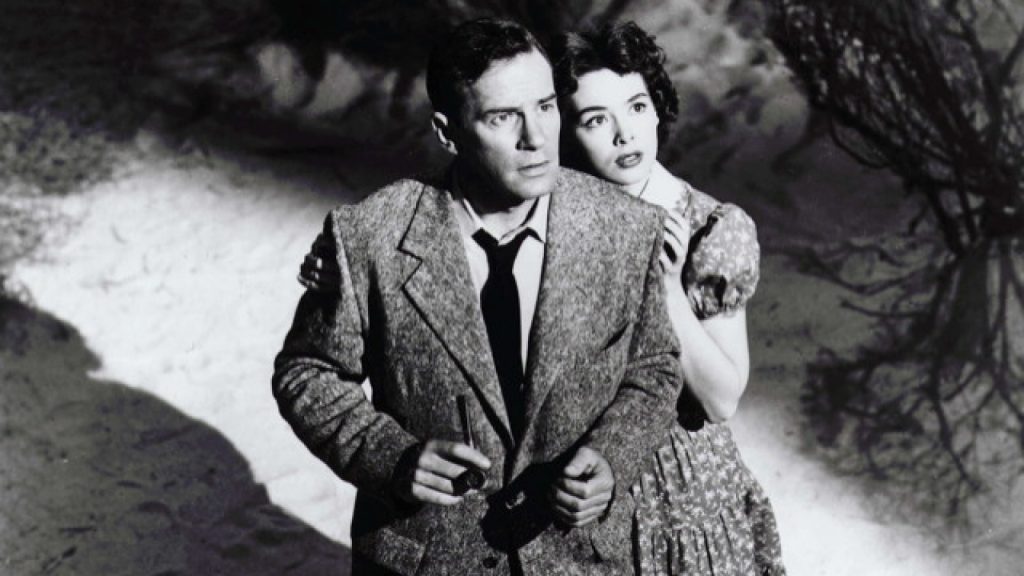
While it has enjoyed a recent surge in popularity in the past few years, science-fiction wasn’t taken seriously as a genre until around the late 1970s, with the release of Star Wars and Close Encounters of the Third Kind legitimizing the genre as more than pulpy b-pictures. While recognition was scant leading up to then, the genre still produced several classics that have garnered a favorable response in later years. With a script based on an idea from science-fiction mast Ray Bradbury, It Came from Outer Space arrives at the intersection of camp and high-brow ideas for a classic genre film as entertaining as it is enlightening. Released at the height of the cold war and taking influence from the red scare raging in both Hollywood and Washington D.C., the movie is a tale of first contact between the residents of a sleepy Arizona town and a group of strange creatures from outer space and the ensuing efforts to keep the peace between two groups who can’t possibly understand each other. While admittedly cheesy to a fault at points, It Came from Outer Space is a great entry point into pre-1970s sci-fi that contains many of the plot elements and character archetypes the genre utilized.
THE INNOCENTS
GENRE: HORROR
Director: Jack Clayton
Year: 1961

While not technically produced in Hollywood, Jack Clayton’s horror landmark The Innocents received funding from American movie landmark 20th Century Fox, and therefore has enough American influence to be included on this list. Adapted from Henry James’s novel “The Turn of the Screw” (which just underwent another adaptation at Netflix titles The Haunting of Bly Manor), The Innocents is one of the earliest horror films that has kept its effectiveness in the decades since its release. Taking common tropes of the genre such as large mansions, creepy children, and implied sexuality and twisting them in terrifying new ways that scare the audience without resorting to cheap jump scares.
With Clayton’s atmospheric direction, the story of a governess slowly realizing there is something very wrong with her wards is elevated from a cheap thriller to a horror film that uses its unseen antagonist as a metaphor for the loss of childhood innocence and the grief associated with loss. Aided by mesmerizing performances by Deborah Kerr and Martin Stevens as well as striking cinematography by Freddie Francis, The Innocents, along with the other films mentioned above, remains a shining example of some of the best classic genre films Hollywood has to offer.

